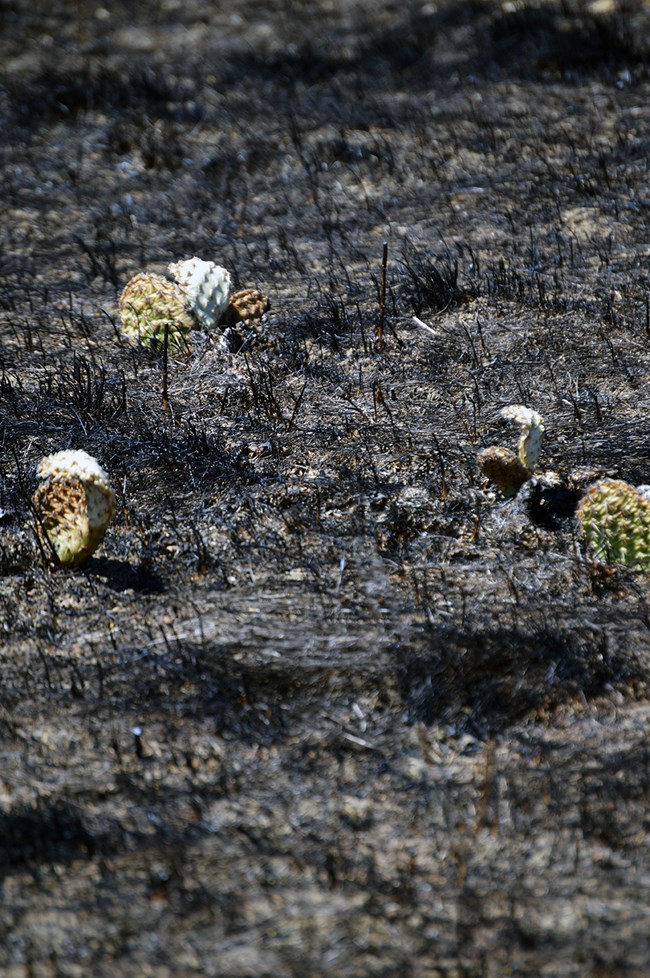
Grassland Fire Ecology History engulfs the Little Bighorn National Monument. Most think of the human history, but the land tells a story too. Fire is an integral character in that story. Wildfire helped shape the grassland where the Battle of Little Bighorn took place. Historically, bluebunch wheatgrass, Sandberg bluegrass, and junegrass populated the native grassland ecosystem. Grasslands can exist in a variety of climates, but they share several important characteristics: dry seasons or dry spells and rolling terrain with prevailing winds. Dry vegetation and winds also serve as major ingredients for fire. Wildfire has a reputation as a destructive force, but it often functions to maintain ecosystem balance. Regular wildfires shape the makeup of vegetation by suppressing woody plants and favoring grasses. Because their growth structure is situated at or below the ground, and because they produce seeds more regularly, grasses tolerate fire more than other species. Without fire, shrubs and trees would take over grasslands, effectively converting them to forest. While lightning is the natural source of ignition for wildfire, archeological and historical evidence shows that Native Americans also lit fires to drive game, harvest grains and nuts, enrich the soil for agriculture, clear land for travel, or as an offensive and defensive weapon in battle. Animals, too, rely on the relationship between land and fire. For example, studies show that bison prefer grass from more recently burned areas. Want to know more? Here is more information regarding fire management and fire history at the monument. |
Last updated: April 17, 2017
